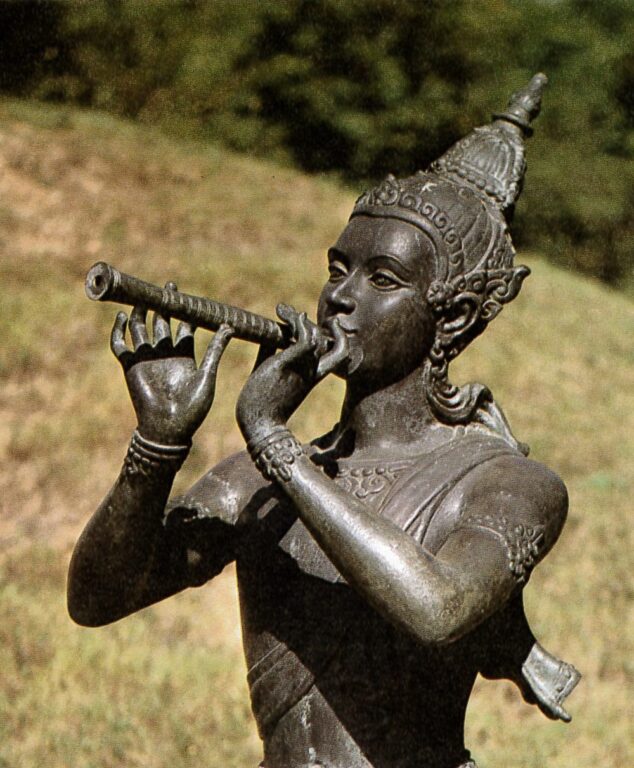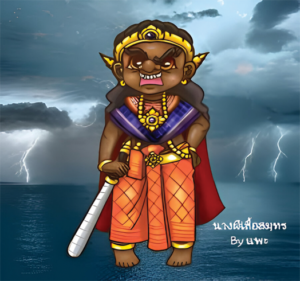CHAPTER 2 : THE STORY OF PHRA APHIMANEE

In the previous chapter, we have introduced the poet of Sunthorn Phu, the poet of Phra Aphaimanee who is often referred to as the William Shakespear of Thailand. In this Chapter, we are about to present you the whole story as synopsis to simplify the long and complicated story for easy understanding.
In the Kingdom of Rattana, King Suthas and Queen Pratumkesorn had given birth to 2 Princes, namely Aphaimanee and Sri Suwan. When they were grown up, the king sent them for further study. Prince Aphaimanee learned the art of pipe blowing while Prince Sri Suwan learned the art of swordplay. This made their father upset as he thought the learning subjects were so nonsense. As a result, there were chased away from the kingdom. Those princes took the same trip together with their 3 fellows. They stopped over an island. Prince Aphaimanee showed up his pipe blowing performance to his fellows that lulled them to sleep in depth. By that time, a sea monster heard the pipe sound, and she followed it.

Then found Aphaimanee and fell in love with him. She kidnapped him to her cave. She disguised herself as a beautiful woman. Then stayed together in the cave until they had a son named Sinsamutr. Both Aphaimanee and Sinsamuts had learned that she was sea monster disguised as human being. Sinsamuts was so powerful that he could remove the gigantic stone covering the cave to lock them in. Then they ran away with the help of mermaids escaping to the island of hermit. The sea monster followed and caught up them and killed the mermaid parents before reaching the hermit island. With the magical help of the hermit, Aphaimnsee, Sinsamut and mermaids’ daughter were saved. The sea monster could not get on to the hermit island. Eventually Aphaimanee blowed the pipe of which sound killed her. Then both Aphaimanee and Sinsumutr ordained as a hermit.
A further story will be presented in the next chapter. We have omitted to talk about Prince Sri Suwan, Prince Aphaimane ‘s younger brother, as it is a part but not the main story. Anyhow, some parts of that story shall be referred to when it is relevant to the main story.
